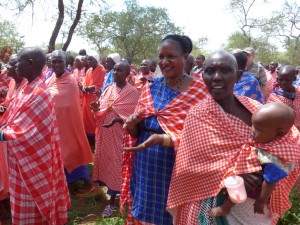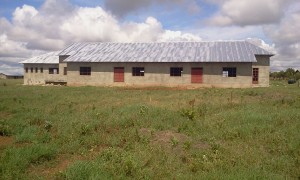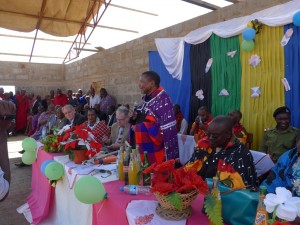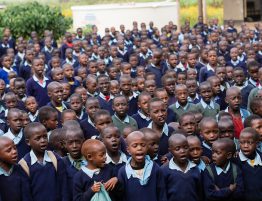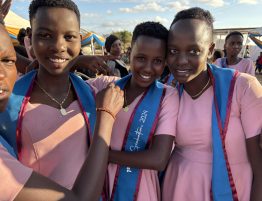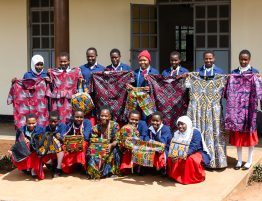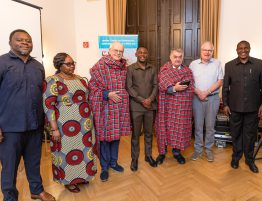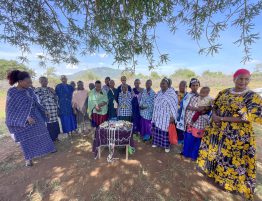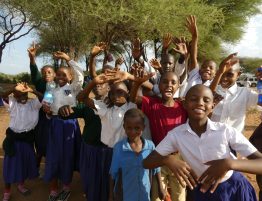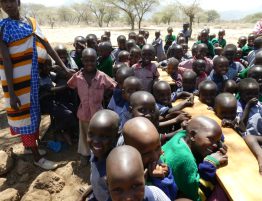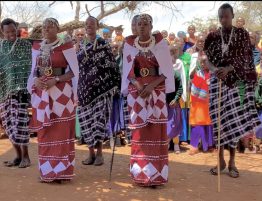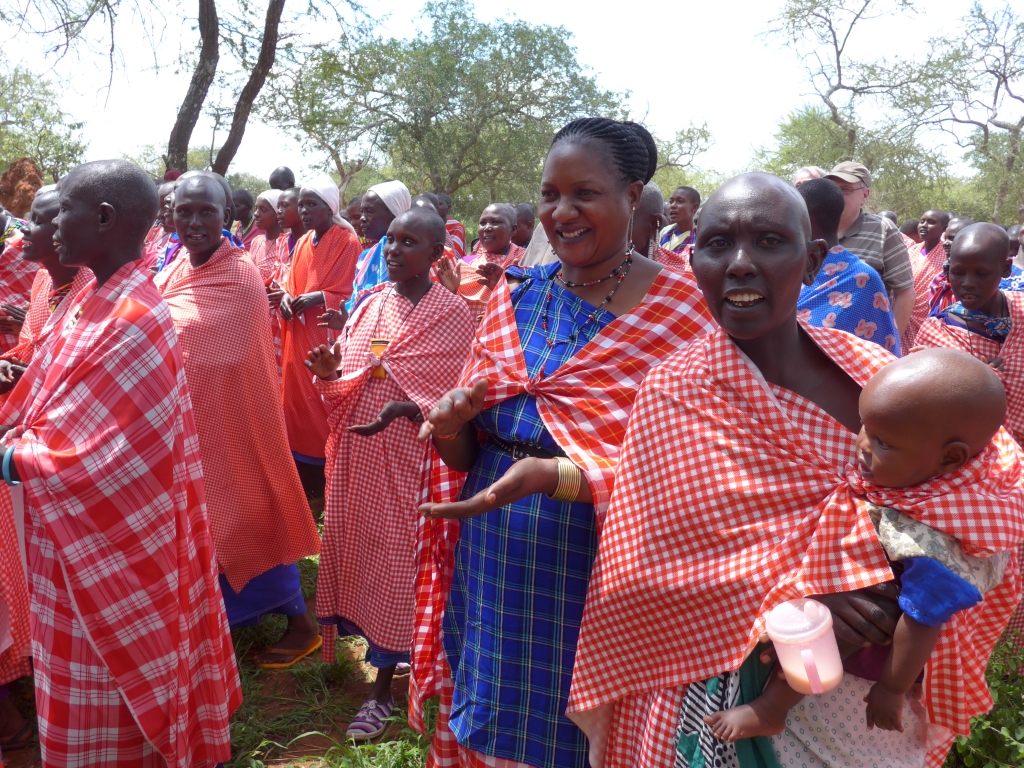
The Maasai people did not attribute much significance on education in the past. They belong to the most backward and economically disadvantaged people in Tanzania. The cultural pressure – particularly on women – as well as the conviction that education leads to a loss of culture and a break with traditions are among the main reasons for the fact that in the Simanjiro-District only one person out of four is able to read. The rate of breaking off school is high, particularly among girls. The main reasons for this are pregnancy, early marriage and the tradition to educate boys rather than girls. Upendo wants to support the ECLAT foundation in their aim to improve the role and situation of women and to improve the quality of education in the district hrough establishing a secondary school.
Matthias Schmid: ECLAT Women`s Projects
In Maasai society women live completely dependent on their husbands in the husband`s farmstead („boma“). The bomas are often situated far away from each other so that there is very little opportunity for the women to communicate with other women. Since most of them have not benefitted from school education and since they do not have access to technical devices in order to obtain information they live a very isolated life.
The ECLAT women`s groups offer them the opportunity to meet with other. Such women`s group are uncommon and new for the traditional Maasai society. That is why at the beginning of the women`s projects Philomena Toima the founder of the group had to go from hut to hut in order to ask the husbands` permission for their wives to attend a women`s group.
In the meantime 104 groups (as of April 2015) came into existence each of which is officially state registered and has its elected chairwoman and secretary. Philomena visits and looks after the groups in the villages where the women meet and exchange their daily experiences. The discussions concentrate on health and hygiene issues, on domestic violence and family planning as well as on the relevance of education for the life of the families. This underlines the close relation with the upendo school project. Development depends on qualified education for which reason it is important to raise the acceptance of the values and benefits of school education among the population.
There is a second reason why the women`s groups are important: as a rule Maasai women have hardly any possessions. When they marry they have to build their own hut for which they have to look after and in which they will later live with their children. The husband`s cattle covers their daily needs and that of their children.
They hardly have any money of their own not even to spend for small things of the daily needs such as soap. So another aim of the women`s group is to make the women financially less dependent on their husbands.
Only small amounts for themselves or their children are involved. Individual groups are provided by upendo with seed capital the investment of which is decided by all women belonging to a group. Some for example chose to buy some calves. The women`s group rears the calves until they are grown up cattle which can be sold again. A third of the revenue is distributed among the members of the women`s group, two thirds are “reinvested” in a new project. This way the women generate a certain amount of which they can dispose themselves.
Joachim Buchmüller, registered Architect: Construction of a Canteen and a Dwelling for Teachers
In February during my first visit to Africa I was able to visit The ECLAT project in Tanzania. Apart from the visit to the Kiroya family and to several women`s groups in the villages the inauguration of the school canteen was the highlight of our journey. As an architect I was particularly interested in the newly constructed buildings of the school project, buildings of which so far I had only known the construction plans. It is difficult to imagine what it really means to construct 62 miles away from the main street to Arusha, hence in the middle of the steppe, and without using any machines as we use to do in Europe a multipurpose hall with a surface of 8,600 ft and a double house for teachers to live in. I was all the more surprised to find not only sufficient material such as sand, cement and brick stones but also many highly motivated workers and thanks to our water project also sufficient water and mortar. In only a few weeks the foundation, the base plates, outer walls and roofs had been constructed.
The masonry made of stable concrete blocks made a very neat and tidy impression. What had been particularly difficult had been the delivery of pre-fabricated roof girders for the hall. It took the articulated lorries a whole day to transport the pre-fabricated 65 feet long steel parts at snail`s pace to Emboreet. Choosing such a construction had the advantage of allowing to construct a relatively high, open and column-free interior room on the one side and to be able to quickly install a roof truss. The construction was then completed in only a few days by closing the roof with the customary corrugated metal panels. Under African conditions this was an exceptional performance. The following days and weeks were dedicated to the installation of electricity, water and sewage pipes as well as plaster and paint work.
The work was done under the supervision of the local site manager of the general contractor in charge and by the manager of ECLAT, Bakiri Angalia, both of whom I had the opportunity to get to know. Should the performance and quality of further construction works continue like this in future I have no reason at all to worry about the future of this part of our project.

